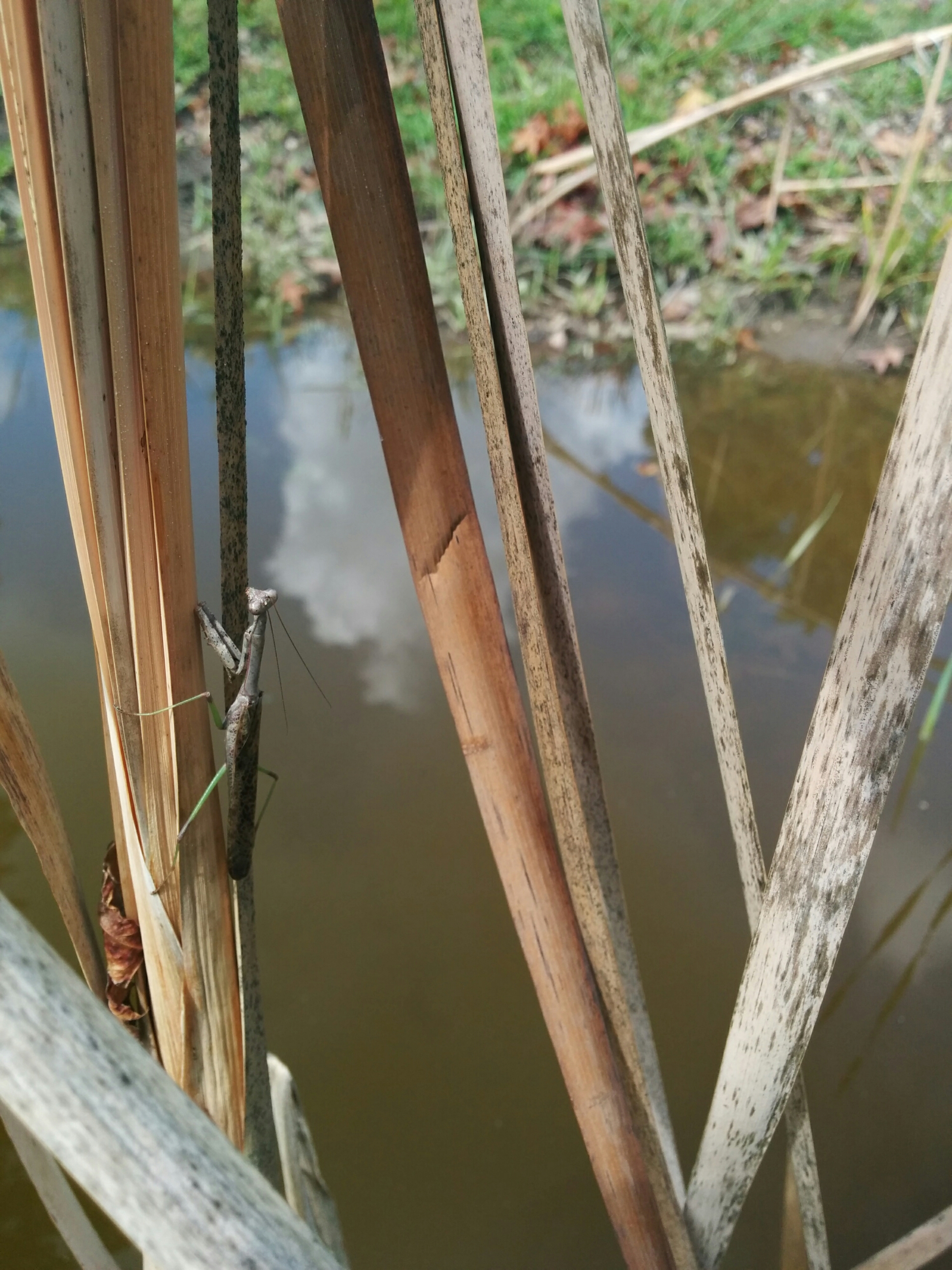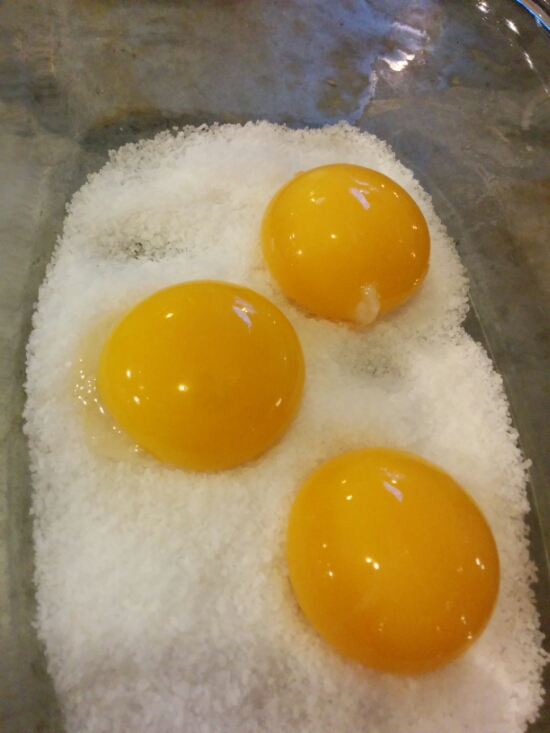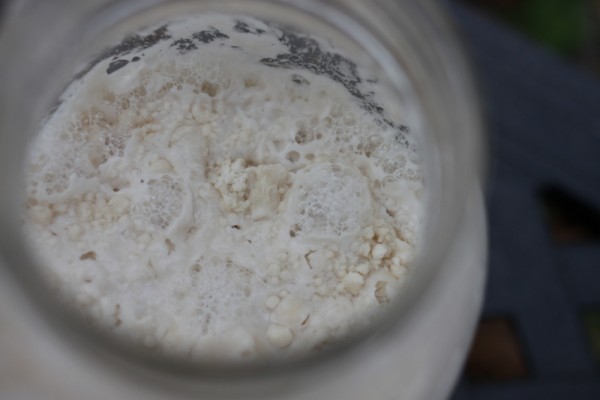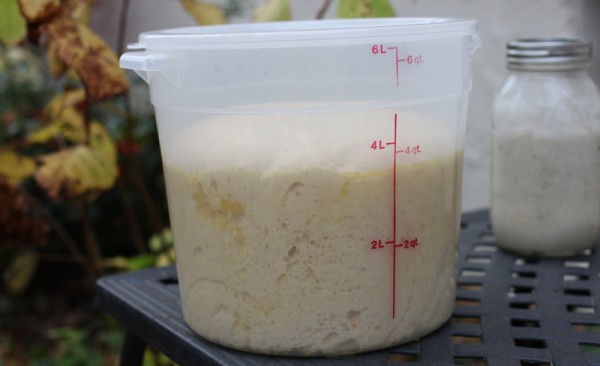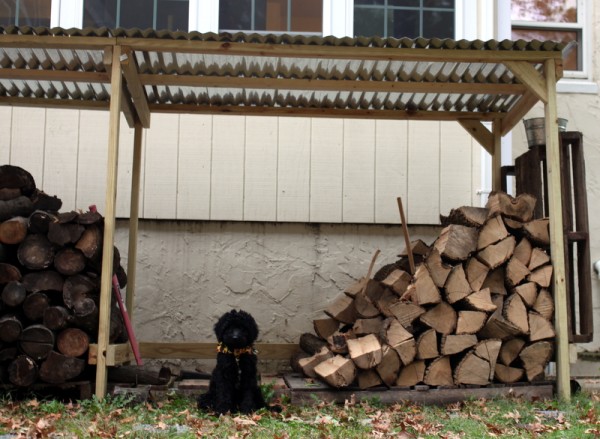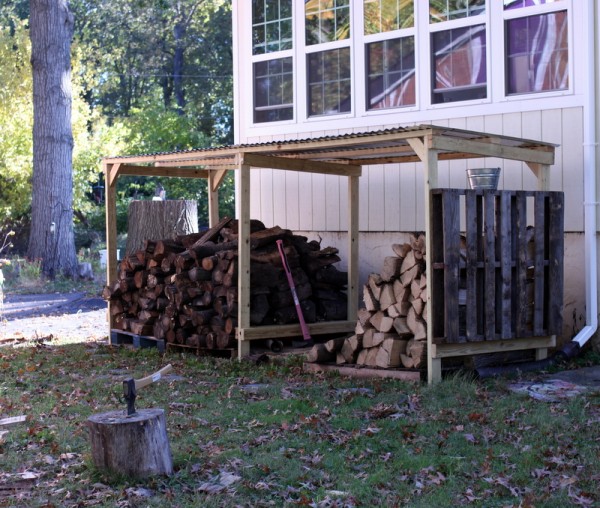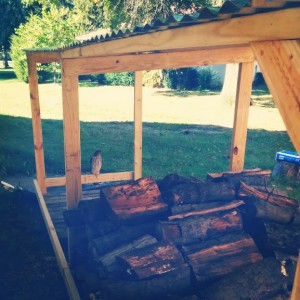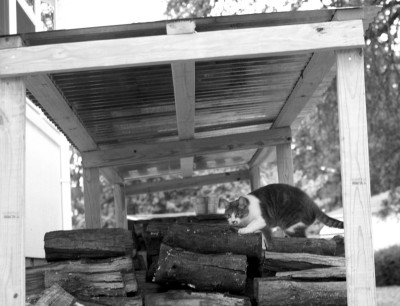Urban Agriculture grant collaborative project completed in the summer of 2017
Read moreFrog In The Swond - Attracting Wildlife With Water
We're coming upon our third growing season at the Harmonious Homestead property. As I think about the year ahead, it occurs to be that I've never shared the most exciting goal we achieved last year. The frog in the swond.
 When we moved here, our property was like a park. We enjoyed big, beautiful trees and bemoaned the excessive lawn. We watched a few species of birds and wild animals, large and small.
When we moved here, our property was like a park. We enjoyed big, beautiful trees and bemoaned the excessive lawn. We watched a few species of birds and wild animals, large and small.
Something was clearly missing. Amphibians. The presence of amphibians in any environment indicates clean water, active insect life, and lots of other good things. Despite our area being often wet, no neighbors could recall seeing any toads or frogs.
I made it my goal to attract a toad or frog to our place.
Needing a Pond
In July 2013, we experienced heavy rain and thorough flooding of the Swainway garden in the front of our property. The crops weren't totally lost but they weren't healthy either.
During the winter of 2013-2014, several delivery trucks and cars got stuck in the same area. The cause? 3 parts bad driving and 1 part totally saturated ground.
We talked with Joseph, manager of the Swainway gardens at our place, and decided we needed a seasonal catchment basin for the excess water.

Building A Swond
Under Joseph's direction, we rented a machine. He dug for several days until we had a five foot deep meandering hole in the front yard. He invented the the term 'swond' to describe the depression that would hopefully hold and move water seasonally like a cross between a swale and a pond.
It filled with rain and emptied with evaporation for the rest of the summer. We planted wildflowers, cattails, and ornamental willows around the edges. Lil thought a troll might decide to live in the swond, so we wrote a warning sign.

Water skimmers showed up. Bees sipped at the shoreline. Lil discovered a praying mantis on cattails.
One day, Alex came in and said there was a frog. "It jumped," he said. I headed out and I saw....no frog.
Two more times Alex spied the frog before I finally caught a glimpse. A green frog in my swond!
When moving compost to the garlic beds in October, we found a brown toad. Two amphibians near the swond!
 I imagine toad and frog are buried underground now. I hope they survived the winter and will call friends to the swond soon so Harmonious Homestead will never be without amphibians again.
I imagine toad and frog are buried underground now. I hope they survived the winter and will call friends to the swond soon so Harmonious Homestead will never be without amphibians again.
Alex has other goals. He says he'll know we're successful in restoring the area's wildlife when a great blue heron stops by to snack on a frog. A pair of mallard ducks checked out the pond recently, so maybe we're close to that goal too.
Homestead Happenings #3: Plans & Yeast
This week was dominated by planning for the spring ahead. The groundhog may have seen a shadow, but sunny, longer days mean that garden work will come very soon. The weather was warm enough for me to spend a little time digging roots and washing seedling pots yesterday!

What's happened this week:
- We watched BBC's Great British Baking Show on WOSU. Airing Monday nights at 10, this is our new show not-to-be-missed. The hosts are very British - quirky, kind, and quick-witted, and the spirit is more of learning and comradeship than dramatic American food competition shows.
- Inspired by one challenge to bake a cake without chemical leavening, we've experimented with yeast-risen quick breads this week. Alex made yeast-risen biscuits twice (so good we're sharing the recipe soon) and he also did a batch of yeasted pancakes which tasted like a mesmerizing cross between a soft pretzel and a griddle cake.
- On Saturday night, I made a Savarin, a yeast-risen cake from the Great British Baking Show recipe. Not a big fan of cakes, I enjoyed the flavors of the Savarin. The yeast made the texture airy and lightly crumbed but as a whole, the Savarin is not as dense and rich as most modern cakes.
- I helped seed, harvest, deliver, and sell microgreens with Swainway Urban Farm as usual. We're at the Worthington Indoor Farmers' Market this time of year every Saturday morning.
- I considered the NPR story 'Are Farmers Market Sales Peaking?' with great interest. While I love working and shopping at the farmers' market, I know how valuable diversified sales routes become to small farms like Swainway. I don't think we're quite at peak in central Ohio, but smaller markets are declining and bigger markets are refining and improving.
- Based on the previous weeks' seed orders, I wrote out a generalized map of where I want to plant everything. Then I remembered that deer might ruin my sweet corn trials so I started moving things around. I tend to keep adjusting my map up to and even after planting time...
- My mother treated me to dinner at Angry Bear Kitchen and the show Anything Goes presented by Broadway Columbus. Both exceeded my expectations. I ate a creative and delicious carrot wellington at Angry Bear. Emma Stratton, the female lead of Anything Goes, was spectacular.
- I worked on my presentation for the Ohio Ecological Food and Farm Association annual conference this coming weekend. I'm discussing 'Building Self-Sufficiency Through Community' and will share a version of that presentation here for those who can't come to the conference.
- I just started salt-cured egg yolks for my next class at The Commissary. On February 18 I'll share how I put up excess eggs while we make egg noodles and other treats. Register online now to reserve your spot.
- I am planning class proposals for the spring. What would you like to learn?
How was your week?
Homestead Happenings #1: Seeds, Trees, & Braces
I advise homesteaders to keep a journal. It's a great practice because a record of daily homesteading activities is fun and useful to look back on. But I find myself not in the routine of writing daily now. "Do as I say, not as I do," I suppose.
I thought I'd try something different instead, for you and for me. I plan to share a weekly wrap-up of our major homesteading activities. Then I'll have something to refer to in the future and perhaps you'll be inspired to take on similiar chores, projects, and events.
I'm not going to share regular activities like cooking meals, taking care of animals, and general gardening. I want to list the big things - canning days, gardening projects, irregular chores, and links - with pictures taken this week. If I can keep this up, it should build a good library of resources for fellow homesteaders and an online journal for me.
Here's what I was up to this week:
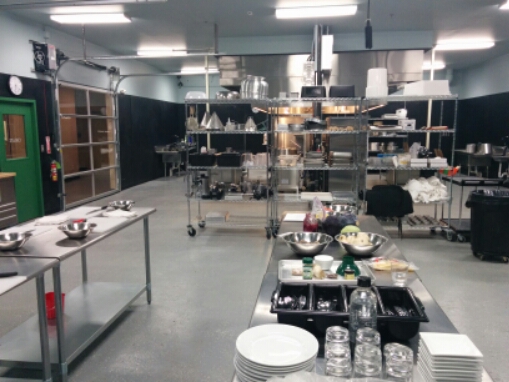
- Placed seed order with Bountiful Gardens for culinary flowers and grains.
- Taught at The Seasoned Farmhouse and The Commissary. It's good to be back in the teaching game - I haven't led any major classes since before Thanksgiving.
- Ordered (more) fruit trees and sweet sap maples from St. Lawrence Nursery.
- Comforted Lil as she adjusts to her new palate expander and braces. She's not very excited about this but in a few months she'll finally be able to share a smile with two front teeth.
- Meanwhile, I rid the house of sticky sweets that aren't good for her diet or orthodontia. Real Mom Nutrition has a great post up about "fruit snacks" a.k.a. sticky sweets in disguise.
- Posted about our hair care routine.
- Shared my recipe for ginger miso salad dressing on the Swainway Urban Farm website.
- Oogled the newly-released Franklin County Soil and Water Conservation District Fish & Tree Sale offerings.
- Met with Kate about her new farm Foraged & Sown and the little farms project. Yes! You can still order a bundle of highly productive perennial fruit & nut trees with us!
- Appreciated the wonder of being alive while sympathizing with friends and family affected by ill health and death this week. I am hopeful that the week ahead contains far less bad news.
How was your week? Do you think a weekly list of happenings on Harmonious Homestead is useful or over-sharing?
Care & Feeding of Sourdough Culture
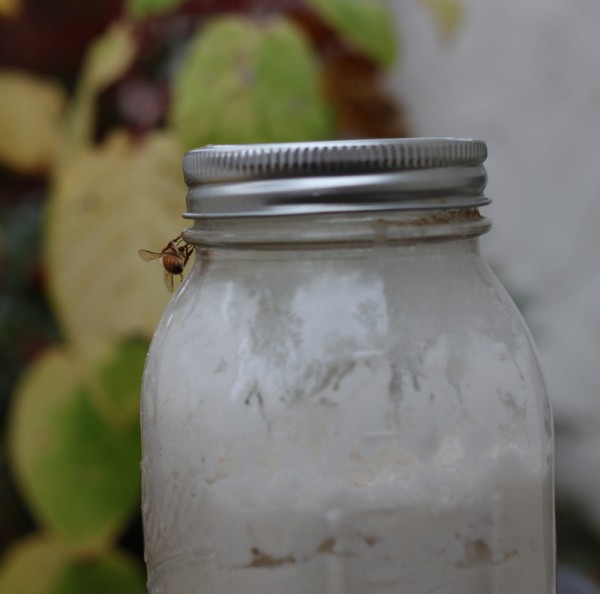 Winter is a great time to add a new pet to the family. No, this isn't another post about Annabel. And I'm not referring to the bee checking out this jar either. I'm talking a pet of the culinary variety - sourdough.
Winter is a great time to add a new pet to the family. No, this isn't another post about Annabel. And I'm not referring to the bee checking out this jar either. I'm talking a pet of the culinary variety - sourdough.
Sourdough is a grain-based, aerobic, yeast and bacteria culture. The most vibrant sourdoughs are made over years of using and feeding, but there's nothing particularly complicated about keeping sourdough. The easiest method is to start with a strong starter shared by a friend.
If you need to start one yourself, here's what to do: 1) Set aside equal parts flour (your choice of flour type - we use all-purpose, unbleached organic wheat) and unchlorinated water at room temperature in a clean glass jar. Cover loosely with a few layers of cheesecloth or gently closed mason lid. 2) In two days, discard half of this mixture, stir, and feed with equal parts flour and water again. 3) Repeat discarding and feeding every two days. 4) After a few feedings, a sourdough smell and visible bubbles appear. 5) Continue feeding regularly and use after a few weeks when the sourdough reliably bubbles within four hours of feeding.
Keeping Sourdough Going
You can ‘train’ your culture to tolerate your baking preferences. If you bake frequently, you can feed daily and the culture will begin to multiply more rapidly. If you don’t bake frequently, you may be able stretch feedings to three or four days by feeding thickly (reduce water by half) or keeping the culture in a cooler place. To transfer to a new flour (rye, whole wheat, etc.) use some of the old culture to start a new culture by feeding with half old/half new flour for a few feedings and then transition to using all new flour.
Use refrigeration if you need to be away from your culture for a few weeks. Feed twice the flour amount you might regularly feed just before you leave and put the culture in the fridge. This method has allowed us to travel for up to ten days without finding a sourdough sitter.
Using Sourdough Starter
The wild yeasts in sourdough can be used to flavor doughs, enhance yeast-risen doughs, and even replace added yeast all together.
For flavoring baked goods (pancakes biscuits, etc.), substitute sourdough culture for up to one quarter of the liquid.
To enhance yeast-risen recipes, substitute sourdough starter for one quarter of the water and reduce commercial yeast by a quarter. Allow the dough to rise for an extended period of time - the longer you let dough rise (punching down each time it doubles), the stronger the sourdough flavor and probiotic nutritional benefit. Then form loaves and bake as usual.
Depending on the thickness of your sourdough starter, the substitutions may not be exactly one-for-one. Experimentation is the best way to determine how recipes will work when using sourdough.
Sourdough can provide all the rising power a loaf of bread needs, but on its own timeline. Typically wild yeasted sourdough breads require twelve to forty eight hours to fully culture the recipe and create the air pockets we know as risen bread. Wild yeasted breads often use 1 part sourdough culture, 4-5 parts flour, 1-2 parts water, salt and sugar.
While there are ‘recipes’ for wild yeasted breads, like our sourdough challah, making a bread that uses your particular culture that works in your particular environment calls for more art than science. Keeping careful notes and a trial/error approach to baking is the best way to take advantage of sourdough cultures.
Do you keep a sourdough starter? In the future, I'll write about troubleshooting sourdough issues, so send me your questions and concerns!
Care & Feeding of Sourdough Culture
 Winter is a great time to add a new pet to the family. No, this isn't another post about Annabel. And I'm not referring to the bee checking out this jar either. I'm talking a pet of the culinary variety - sourdough.
Winter is a great time to add a new pet to the family. No, this isn't another post about Annabel. And I'm not referring to the bee checking out this jar either. I'm talking a pet of the culinary variety - sourdough.
Sourdough is a grain-based, aerobic, yeast and bacteria culture. The most vibrant sourdoughs are made over years of using and feeding, but there's nothing particularly complicated about keeping sourdough. The easiest method is to start with a strong starter shared by a friend.
If you need to start one yourself, here's what to do: 1) Set aside equal parts flour (your choice of flour type - we use all-purpose, unbleached organic wheat) and unchlorinated water at room temperature in a clean glass jar. Cover loosely with a few layers of cheesecloth or gently closed mason lid. 2) In two days, discard half of this mixture, stir, and feed with equal parts flour and water again. 3) Repeat discarding and feeding every two days. 4) After a few feedings, a sourdough smell and visible bubbles appear. 5) Continue feeding regularly and use after a few weeks when the sourdough reliably bubbles within four hours of feeding.
Keeping Sourdough Going
You can ‘train’ your culture to tolerate your baking preferences. If you bake frequently, you can feed daily and the culture will begin to multiply more rapidly. If you don’t bake frequently, you may be able stretch feedings to three or four days by feeding thickly (reduce water by half) or keeping the culture in a cooler place. To transfer to a new flour (rye, whole wheat, etc.) use some of the old culture to start a new culture by feeding with half old/half new flour for a few feedings and then transition to using all new flour.
Use refrigeration if you need to be away from your culture for a few weeks. Feed twice the flour amount you might regularly feed just before you leave and put the culture in the fridge. This method has allowed us to travel for up to ten days without finding a sourdough sitter.
Using Sourdough Starter
The wild yeasts in sourdough can be used to flavor doughs, enhance yeast-risen doughs, and even replace added yeast all together.
For flavoring baked goods (pancakes biscuits, etc.), substitute sourdough culture for up to one quarter of the liquid.
To enhance yeast-risen recipes, substitute sourdough starter for one quarter of the water and reduce commercial yeast by a quarter. Allow the dough to rise for an extended period of time - the longer you let dough rise (punching down each time it doubles), the stronger the sourdough flavor and probiotic nutritional benefit. Then form loaves and bake as usual.
Depending on the thickness of your sourdough starter, the substitutions may not be exactly one-for-one. Experimentation is the best way to determine how recipes will work when using sourdough.
Sourdough can provide all the rising power a loaf of bread needs, but on its own timeline. Typically wild yeasted sourdough breads require twelve to forty eight hours to fully culture the recipe and create the air pockets we know as risen bread. Wild yeasted breads often use 1 part sourdough culture, 4-5 parts flour, 1-2 parts water, salt and sugar.
While there are ‘recipes’ for wild yeasted breads, like our sourdough challah, making a bread that uses your particular culture that works in your particular environment calls for more art than science. Keeping careful notes and a trial/error approach to baking is the best way to take advantage of sourdough cultures.
Do you keep a sourdough starter? In the future, I'll write about troubleshooting sourdough issues, so send me your questions and concerns!
A New Woodshed
After hobbling through one winter with a tarp-covered pile of not-quite-aged-enough wood, we're doing it right this year. In a couple afternoons, Alex built a small woodshed. We're filling it with logs that were taken down over a year ago on the left and standing-dead ash on the right.
Alex designed the woodshed as a lean-to with a reclaimed pallet floor and wall sections and a corrugated steel roof. We'll add pallets to the back if needed but for now want to allow the greatest air flow possible.
We chose steel for the roof because it is more durable and reusable than plastic sheeting or asphalt shingles and we wanted some experience with it for when we might need to replace our house roof. Steel roofing also has the distinction of being able to support itself with minimal joists which reduced our supply cost.
The woodshed is freestanding on cement blocks. We didn't want to dig a foundation and if our past is any indication we might want to move the structure in a couple years.
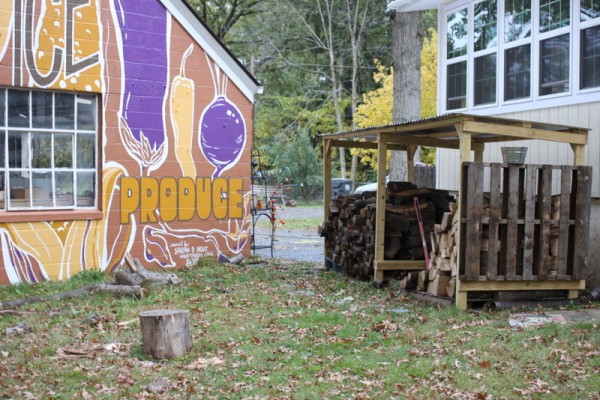 Our homestead seems more homesteady with a real woodshed - stacked wood is like money in the bank, after all. Because the shed is adjacent to Sarah Hout's amazing mural, I know that gathering logs for winter wood stove heating will be more pleasant this year.
Our homestead seems more homesteady with a real woodshed - stacked wood is like money in the bank, after all. Because the shed is adjacent to Sarah Hout's amazing mural, I know that gathering logs for winter wood stove heating will be more pleasant this year.
Already, we're not the only ones enjoying the new woodshed. We caught a hawk spying on a chittering chipmunk and Ms. Moonshine the cat regularly patrols for creatures.
How are you preparing for winter?
A New Woodshed
After hobbling through one winter with a tarp-covered pile of not-quite-aged-enough wood, we're doing it right this year. In a couple afternoons, Alex built a small woodshed. We're filling it with logs that were taken down over a year ago on the left and standing-dead ash on the right.
Alex designed the woodshed as a lean-to with a reclaimed pallet floor and wall sections and a corrugated steel roof. We'll add pallets to the back if needed but for now want to allow the greatest air flow possible.
We chose steel for the roof because it is more durable and reusable than plastic sheeting or asphalt shingles and we wanted some experience with it for when we might need to replace our house roof. Steel roofing also has the distinction of being able to support itself with minimal joists which reduced our supply cost.
The woodshed is freestanding on cement blocks. We didn't want to dig a foundation and if our past is any indication we might want to move the structure in a couple years.
 Our homestead seems more homesteady with a real woodshed - stacked wood is like money in the bank, after all. Because the shed is adjacent to Sarah Hout's amazing mural, I know that gathering logs for winter wood stove heating will be more pleasant this year.
Our homestead seems more homesteady with a real woodshed - stacked wood is like money in the bank, after all. Because the shed is adjacent to Sarah Hout's amazing mural, I know that gathering logs for winter wood stove heating will be more pleasant this year.
Already, we're not the only ones enjoying the new woodshed. We caught a hawk spying on a chittering chipmunk and Ms. Moonshine the cat regularly patrols for creatures.
How are you preparing for winter?

